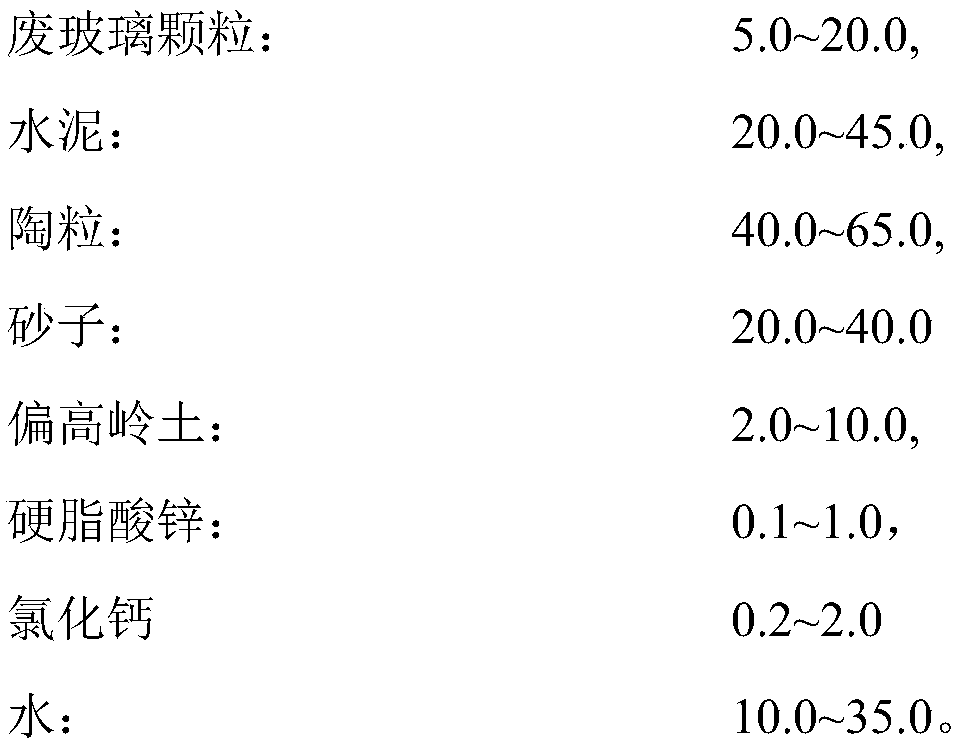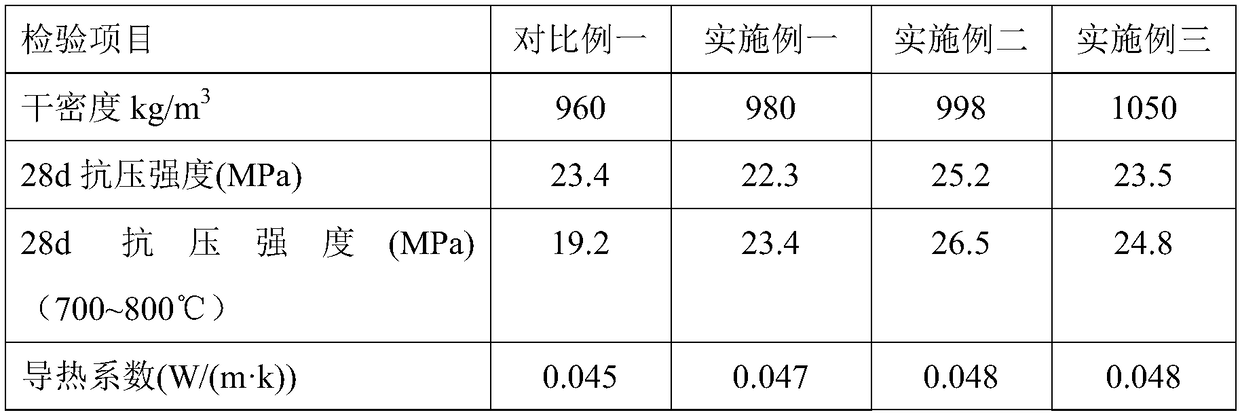High temperature resistant wall material produced by using waste glass particles and preparation method thereof
A technology of wall materials and waste glass, which is applied in the field of high-temperature-resistant wall materials, can solve the problems of low high-temperature resistance, high price of wall materials, and poor high-temperature resistance, and achieve low production costs, excellent thermal insulation performance, and low price. cheap effect
- Summary
- Abstract
- Description
- Claims
- Application Information
AI Technical Summary
Problems solved by technology
Method used
Image
Examples
preparation example Construction
[0043] A kind of slag, calcium carbide slag and ceramsite high-strength wall insulation material, its preparation method has the following steps:
[0044] (1) Pretreatment of waste glass particles
[0045] According to the requirements of GB / T 14681-2011, 4.75mm, 2.36mm, 1.18mm, 600μm, 300μm, and 150μm square hole sieves are used for sieve analysis, and the fineness modulus (M x ) in the range of 2.3 to 3.0, the cumulative sieve percentage (A 1 ~A 6 ) are in Zone II, with good gradation.
[0046] (2) Raw material weighing
[0047] In parts by mass, prepared pretreated waste glass particles 5.0-20.0, cement 20.0-45.0, ceramsite 40.0-65.0, sand 20.0-40.0, metakaolin 2.0-10.0, zinc stearate 0.1-1.0, calcium chloride 0.2~2.0.
[0048] (3) dry mix
[0049] Put the above-mentioned weighed raw materials into a vertical mixer at a speed of 40r / min, and mechanically stir for 1-2min.
[0050] (4) Add water and stir
[0051] Add 10.0-35.0% of water to the above-mentioned stirred ...
Embodiment 1
[0059] A research and preparation method of using waste glass to produce high-temperature-resistant wall materials, the preparation method has the following steps:
[0060] (1) Pretreatment of waste glass particles
[0061] According to the requirements of GB / T 14681-2011, 4.75mm, 2.36mm, 1.18mm, 600μm, 300μm, and 150μm square hole sieves are used for sieve analysis, and the fineness modulus (M x ) in the range of 2.3 to 3.0, the cumulative sieve percentage (A 1 ~A 6 ) are in Zone II, with good gradation.
[0062] (2) Raw material weighing
[0063] In parts by mass, the prepared pretreated waste glass particles are 15, cement 25, ceramsite 45, sand 35, metakaolin 4.0, zinc stearate 0.5, and calcium chloride 1.2.
[0064] (3) dry mix
[0065] Put the above-mentioned weighed raw materials into a vertical mixer at a speed of 40r / min, and mechanically stir for 1.5min.
[0066] (4) Add water and stir
[0067] Add water 16 to the above-mentioned stirred dry material (by mass ...
Embodiment 2
[0073] A research and preparation method of using waste glass to produce high-temperature-resistant wall materials, the preparation method has the following steps:
[0074] (1) Pretreatment of waste glass particles
[0075] According to the requirements of GB / T 14681-2011, 4.75mm, 2.36mm, 1.18mm, 600μm, 300μm, and 150μm square hole sieves are used for sieve analysis, and the fineness modulus (M x ) in the range of 2.3 to 3.0, the cumulative sieve percentage (A 1 ~A 6 ) are in Zone II, with good gradation.
[0076] (2) Raw material weighing
[0077] In parts by mass, 10 pretreated waste glass particles, 30 cement, 50 ceramsite, 25 sand, 3.5 metakaolin, 0.4 zinc stearate, and 1.0 calcium chloride are prepared.
[0078] (3) dry mix
[0079] Put the above-mentioned weighed raw materials into a vertical mixer at a speed of 40r / min, and mechanically stir for 1.5min.
[0080] (4) Add water and stir
[0081] Add water 18 to the above-mentioned stirred dry material (by mass part...
PUM
| Property | Measurement | Unit |
|---|---|---|
| particle diameter | aaaaa | aaaaa |
| particle diameter | aaaaa | aaaaa |
| compressive strength | aaaaa | aaaaa |
Abstract
Description
Claims
Application Information
 Login to View More
Login to View More - R&D
- Intellectual Property
- Life Sciences
- Materials
- Tech Scout
- Unparalleled Data Quality
- Higher Quality Content
- 60% Fewer Hallucinations
Browse by: Latest US Patents, China's latest patents, Technical Efficacy Thesaurus, Application Domain, Technology Topic, Popular Technical Reports.
© 2025 PatSnap. All rights reserved.Legal|Privacy policy|Modern Slavery Act Transparency Statement|Sitemap|About US| Contact US: help@patsnap.com


